We’ve been doing the “T” countdown for months, and now we move to the “T” counter increasing! This post covers T plus one through five (T+1,2,…5)
Highlights – the overview
We leave Koudum and head for Amsterdam, our official home port. Wim thought to have the home port be a Frisian town, but once outside of the Netherlands, we’d have to repeat and spell the name endlessly, whereas everyone knows Amsterdam.
Once out of the canal, the wind and waves create steep short waves that hit us directly on the side… very uncomfortable. A lesser boat, and we witnessed several out there, would be rocking and rolling relentlessly, but Dione IV took it all without any problem! We had everything well stowed away, and with the one exception of forgetting to lock a cupboard cabinet in the bathroom (which resulted in a loud crash and everything dropped onto the floor), everything stayed in place.
We had a good day sail and anchored at the outskirts of Amsterdam… first time anchoring! It was wonderful! Wim spends the day figuring out why the Revs counter isn’t working. The technical support folks aren’t very helpful, and Wim does some more research and figures it out himself! Yay!

In the afternoon, we install the USB-C power to our table and we can both be charging our laptops at the same time! Sher loves that her Sweetheart is so smart and is an energy systems expert!
We stayed two nights and then sailed on to downtown Amsterdam and took a slip at the little Sixhaven marina, directly across from the Central Station. We went to the Rijks museum, did some food shopping, and worked on some projects like installing backup navigation software. When the weather looked bad, we decided to stay at the dock one additional day and made good use of our time… Sher worked on her new sewing machine and Wim installed the new router and connected it to our powerful new marine antenna!
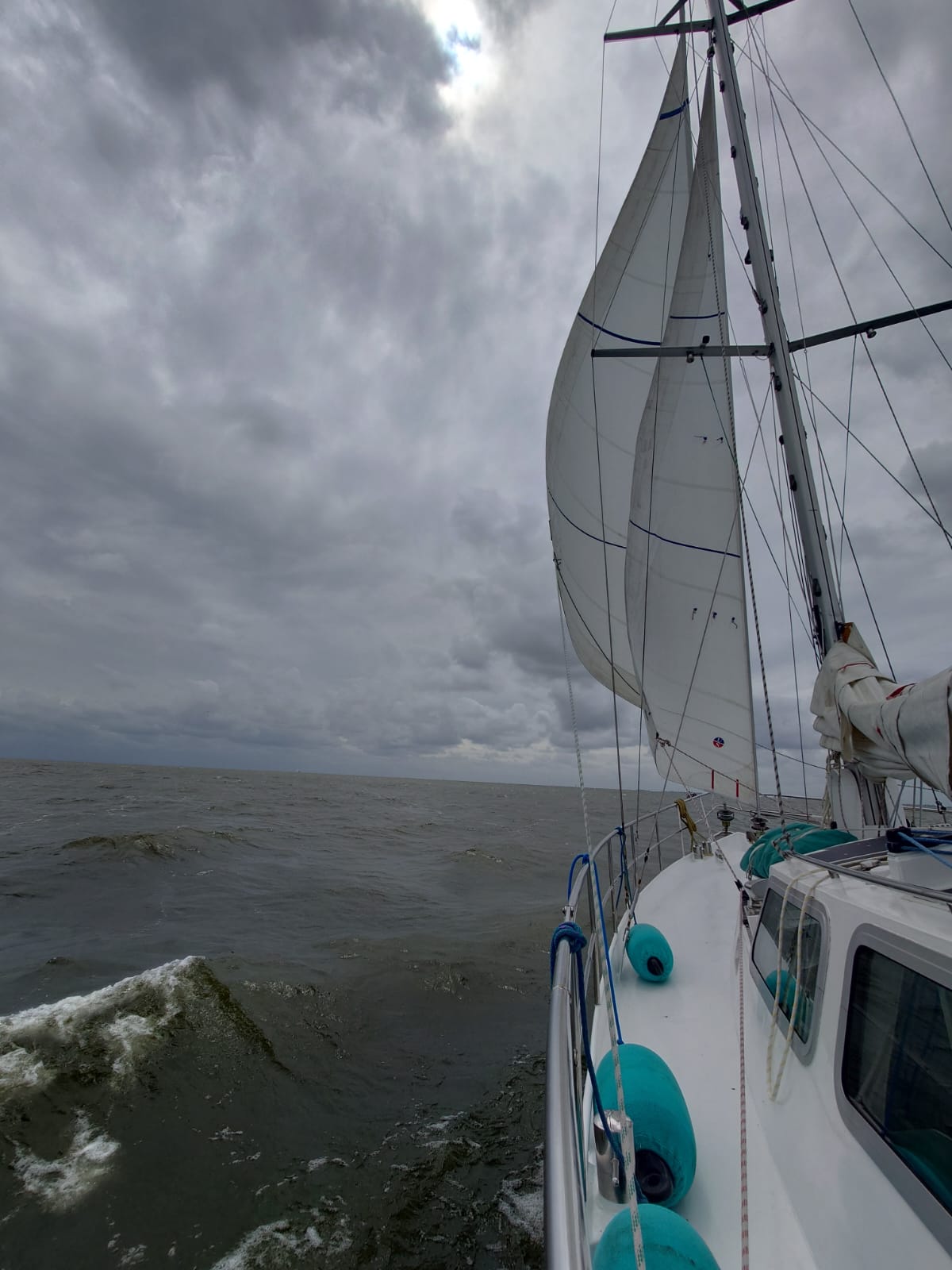
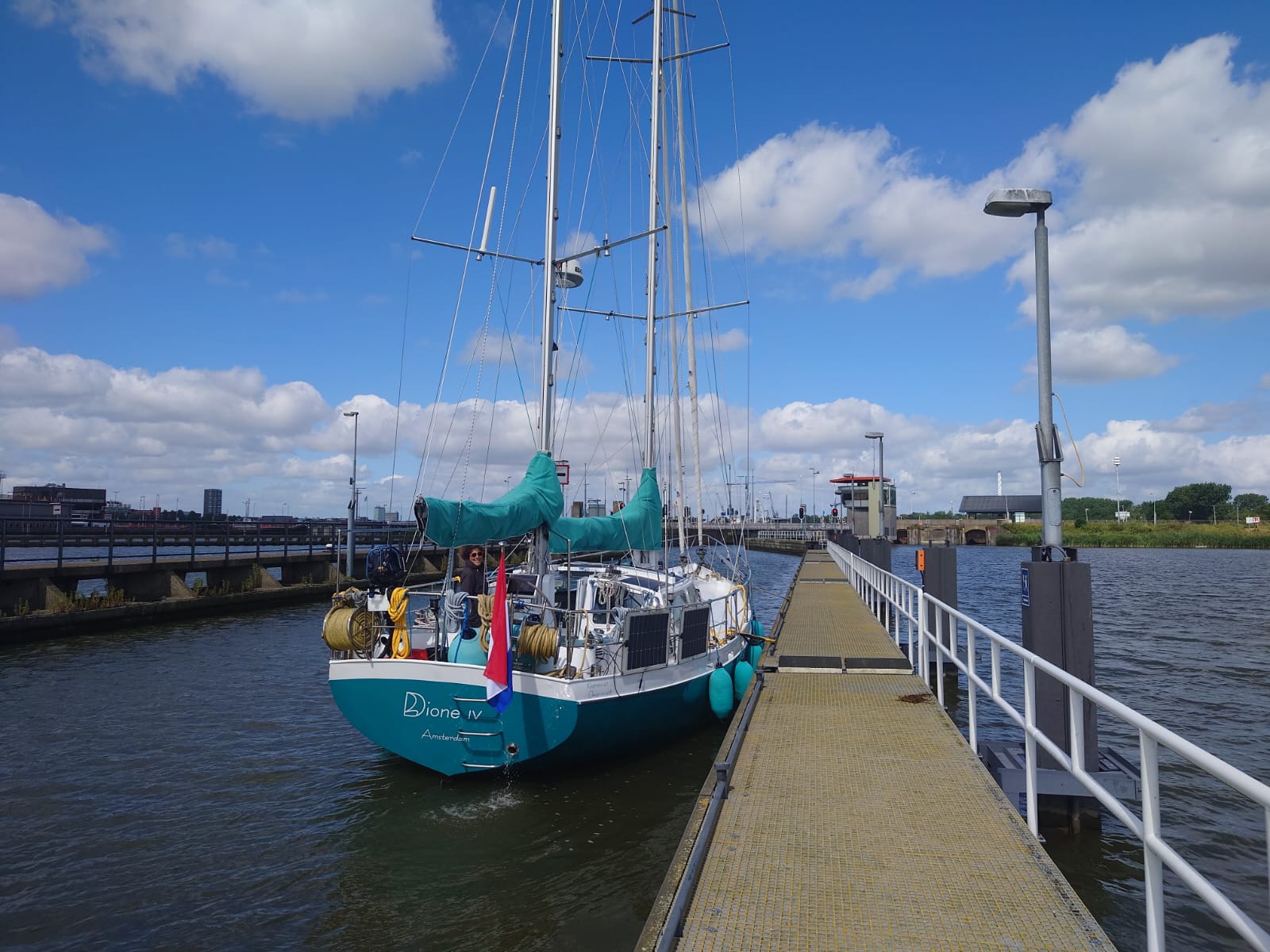
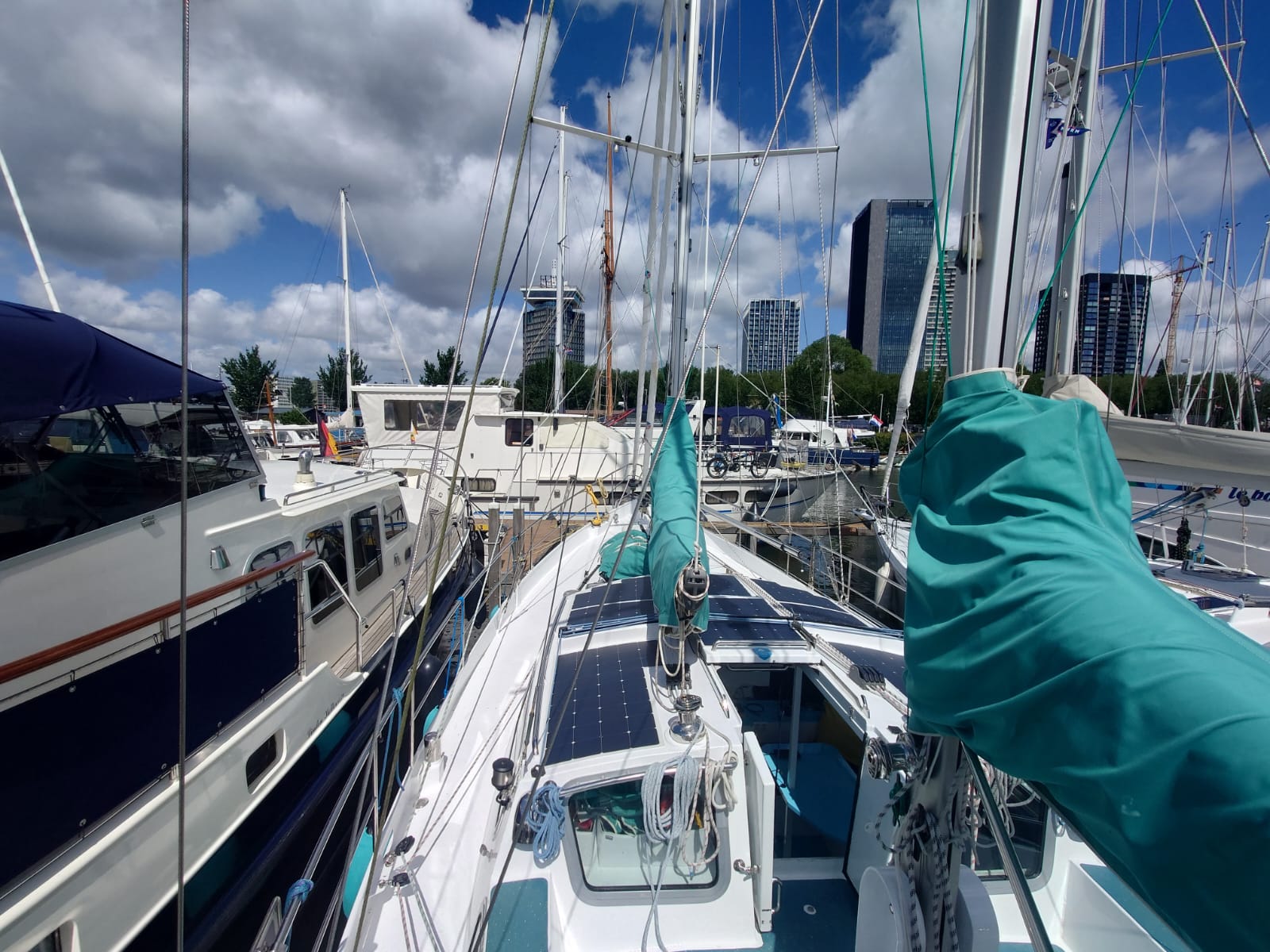
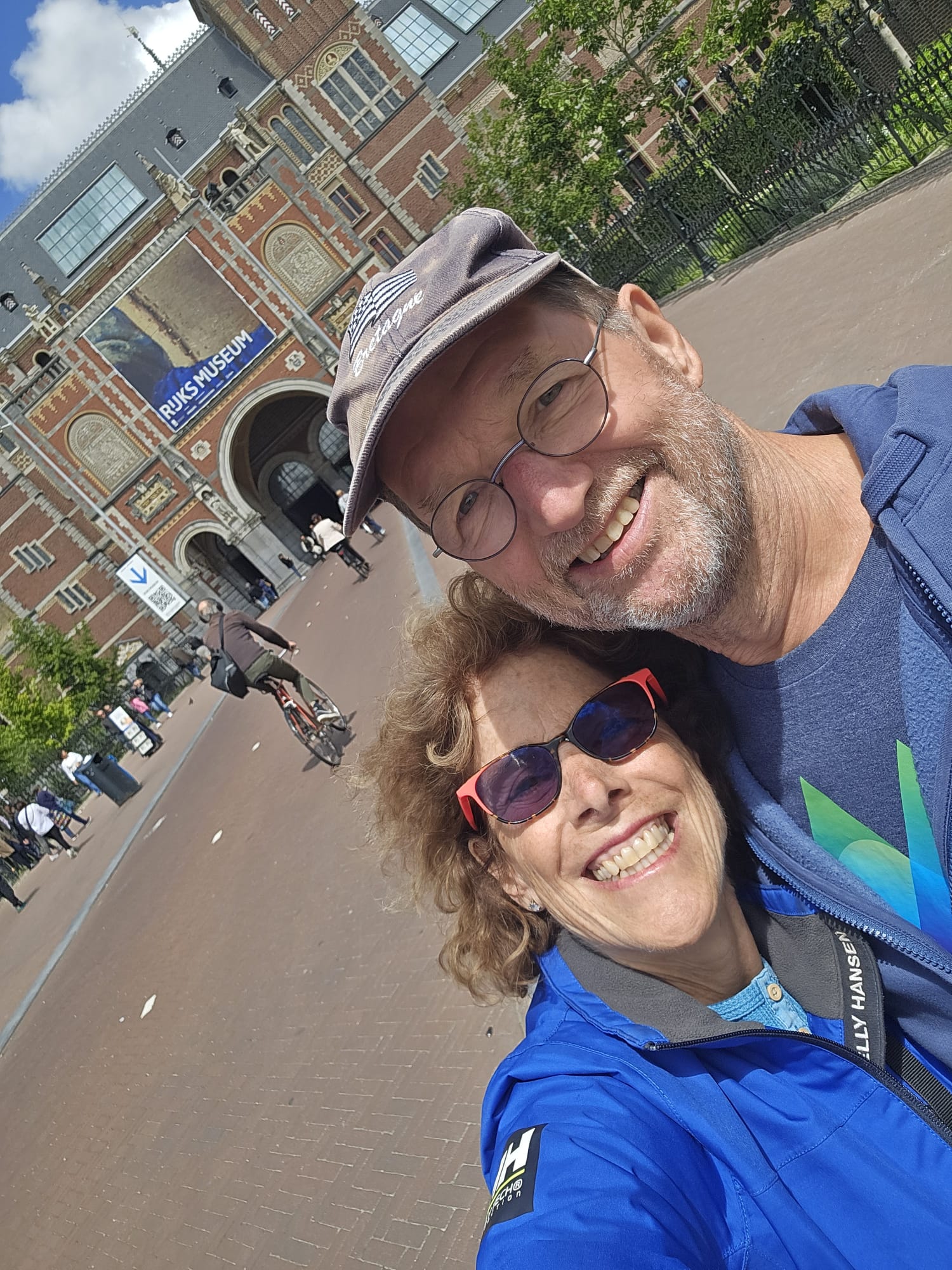

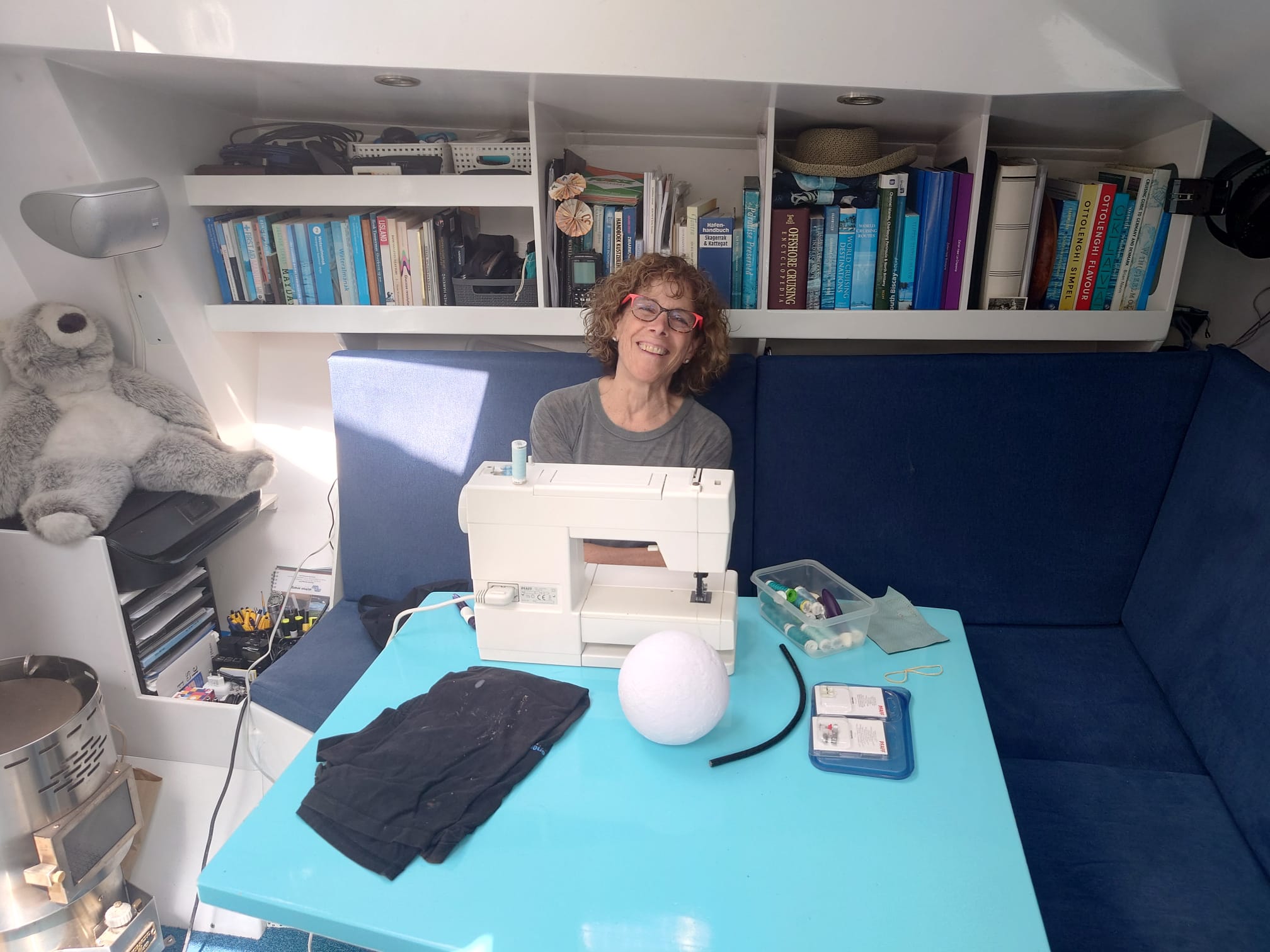
We’d leave the next morning, on our way to visit Wim’s daughter Yara, who is about to have her first baby (and Wim’s first grandchild!), but unfortunately, the route through the canals of downtown Amsterdam is not passable due to a bridge being under construction, so we need to change our plans and go another way. But that’s the cruising life… plans always changing until the time you are actually doing them!
Captain’s Log (T+1,2,…5) – the complete story

When we leave the marina of Galamadammen, we have a headwind. So, we’ll have to motor to Stavoren. When we throttle up, we suddenly see the revs counter working again! That’s funny. Looks like the revs counter is as exited as we are and decides to do its best!
When we pass the locks of Stavoren, we enter the IJsselmeer. The wind is NW 20 knots and the waves are about 1m, short and steep. This area is notorious for that. Accidents happen here, with people coming from the relaxed Frisian waters and meeting this kind of waves.
Because our course is SW and the waves and wind come from the NW, they hit us on the side and make Dione IV roll uncomfortably from side deck to side deck sometimes. Hmm, this is a test for our packing and organizing… When we enter the salon, we hear a lot of noises but there’s nothing falling on the floor. So far, so good!
We set only the jib and the mizzen, not to be too courageous to begin with. But after a few miles, the steep waves ease a bit and we roll out the yankee sail. That creates more stability and speed. We thought Dione IV might be a little slow with her heavy load, but she picks up full speed at this half reach of 20 knots of wind: 7 knots. Great!
We see a German (smaller) boat next to us rolling so terribly on these waves. Sometimes we can see her rudder above the water. But Dione IV is moving nice and easy with her 24 tons now… (we estimate).


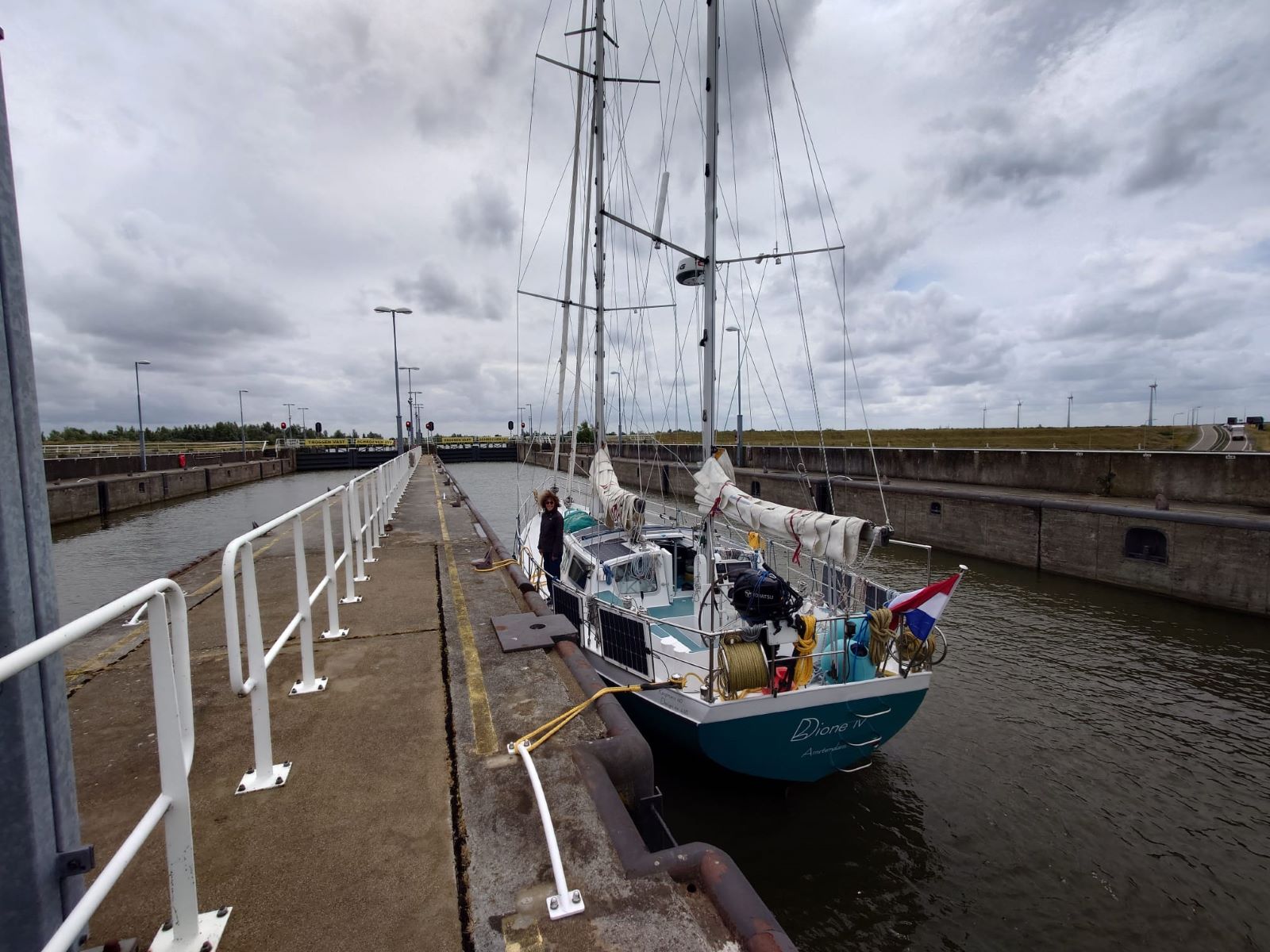
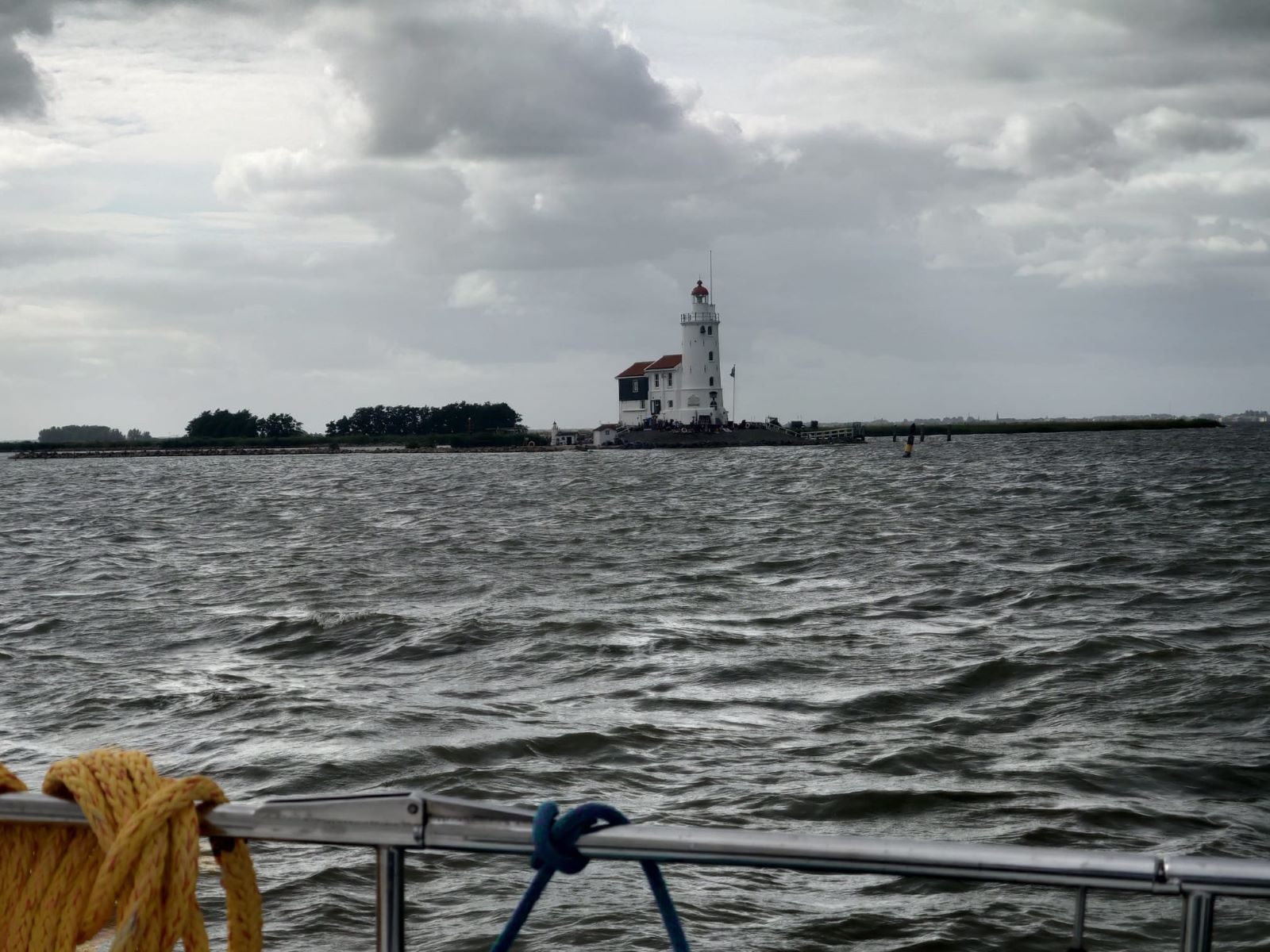
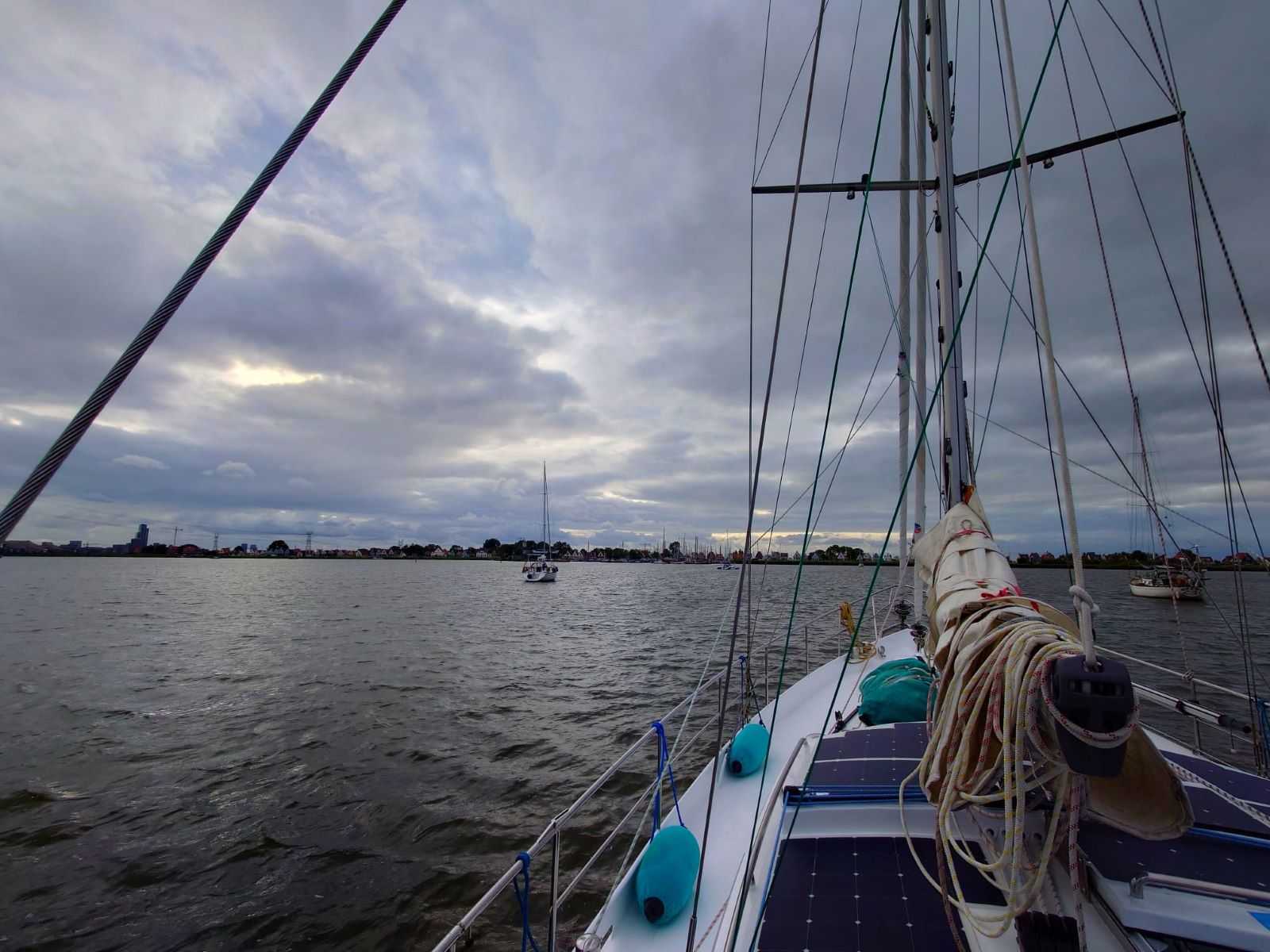
After a wonderful first sailing day we anchor in the bay of “Durgerdam” at 7 o’clock in the evening, have an anchor beer, nice dinner, and we sleep early.
July 3 – Staying at Anchor
Today is a rainy day. We stay at anchor here and do all kinds of small jobs. We feel relaxed after such busy months of preparations and projects.
We got an answer from Solé Diesel in Spain. They think the problems with the revs counter and starter misfires could be caused by the electronics board in the motor panel. We find that a little hard to believe. Electronics work fine or break down. They don’t do intermittant things. So, Wim starts reading about similar problems on the internet. That leads to an idea: suppose the V-belt from the alternator slips a bit. When the engine is started, it takes power out of the starter battery. When the alternator starts, it has to charge a big amount of energy back in the battery, taking a lot of power from the engine via the V-belt. If the V-belt slips, the alternator can’t make enough revs to engage. And when it doesn’t engage, the revs signal doesn’t engage. When we throttle up, there might be enough revs on the alternator, it engages, and the revs signal engages. Let’s see if this theory makes sense!
Wim dives down to the engine and feels the V-belt. It is not really loose but it could be tighter. He tightens it up and starts the engine. Guess what? The revs counter works immediately! Problem solved.

In the afternoon we connect the USB-C device in our new table. It works like a charm! 2x 55W. We can both have our our laptops powered by it. Great!
July 4 – To Downtown Amsterdam!
Today is sunny and there’s no rain… a cool breeze of 15 knots from the west. We decide to sail to Sixhaven marina, in the city center of Amsterdam.
Around noon, we enter Sixhaven. It’s a small marina, very close to the center of Amsterdam: the Central Station is at the opposite side of the “IJ” (the big canal that cuts through Amsterdam).
We squeeze Dione IV in, between 2 other boats 🙂

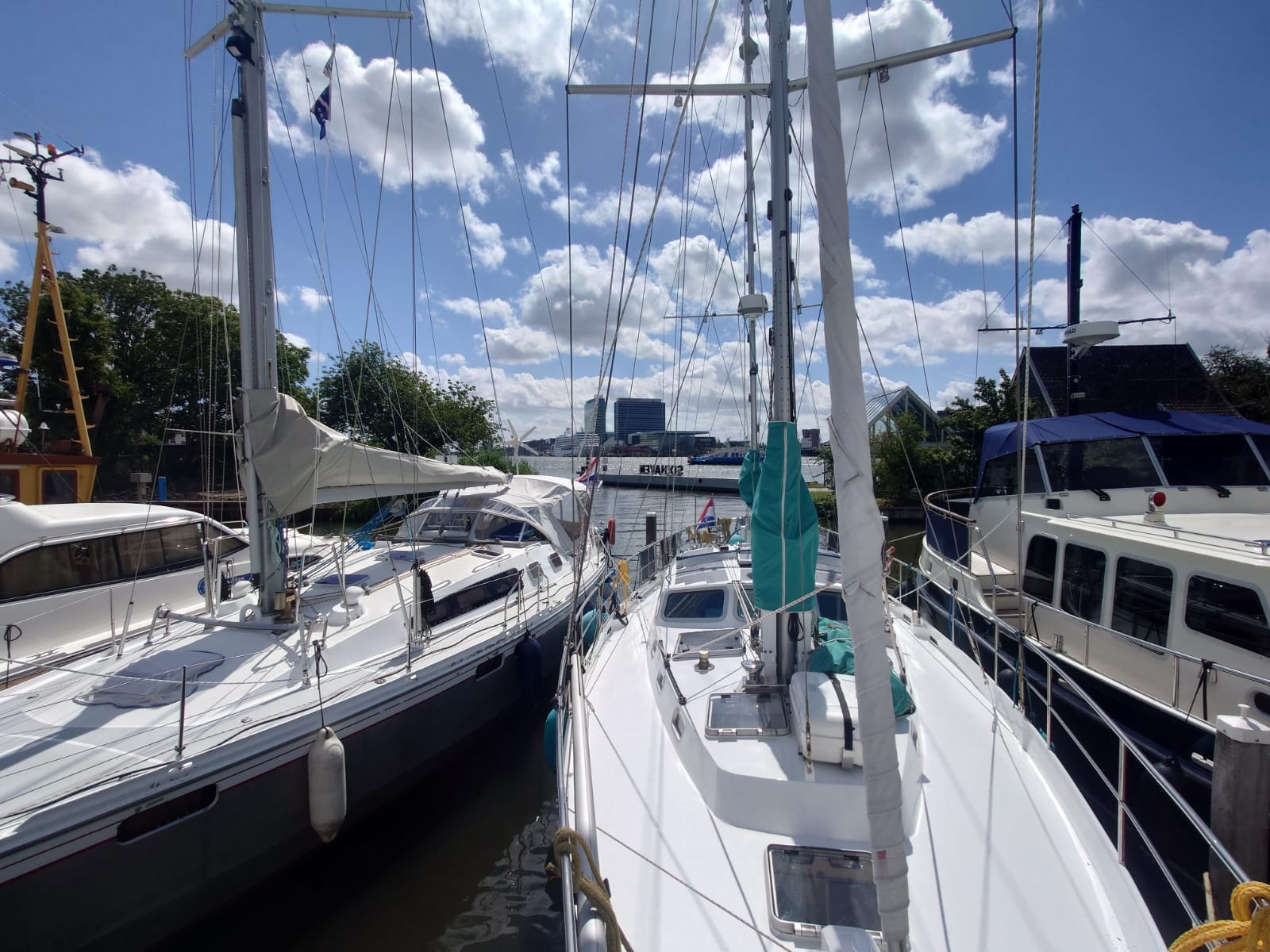
A grey day with some rain showers. We do some shopping in nearby supermarkets and stay on board most of the day. We work on our backup navigation systems. Because we rely on digital charts for the most part, we have to make 100% sure that we have backup systems if electronics fail.
The main navigation system on Dione IV is an industrial solid state PC with 2 monitors: one at the steering pedestal and one in the deck salon. This PC runs Yachtcontrol navigation software using Navionics digital charts. All the boats sensors are via an NMEA2000 network connected to this PC: wind speed, wind direction, water depth, speed, sea water temp, AIS transponder, GPS receiver, battery volts, battery amps, engine revs, engine temp, fuel rate, rudder position, compass. This system is stable as a rock. It has proved its stability over many years and has had some improvements after slight problems occurred in the past. But…. it’s electronics. One direct hit from a lighting strike can destroy all of it. That’s why we need backup systems… and backup systems to the backup systems!
We spend this day to install and test software and hardware on our laptops…

We have multiple levels of backups: 2 laptops, 3 spare GPS receivers, a spare AIS receiver, multiple software platforms, 2 kinds of charts, emergency power supplies, emergency antennas. And when all fails, we have our smartphones running navigation apps.
It takes us the entire day to figure everything out, download and configure software, test all kinds of possible situations but by the end of this day, everything works! We are both good at this and we complement each other. It is a real good and confident feeling that we have this so well arranged.
July 6 – Lots of Rain and Wind… Stay at the Dock!
In the morning it rains and in the afternoon there’s a lot of wind: 30 knots from the SW, gusts up till 45 knots. We were thinking of sailing through the canals of Amsterdam tonight and visit Wim’s daughter, who lives near the lake “Braasemmermeer” and expects her first baby one of these days. So, we check if all bridges are operated with this stormy weather. No! One bridge is out of order and can’t be opened! This cancels our passage through the Amsterdam canals! What a pity.
So, we make new plans. This is cruising life… We’ll take another route, through Haarlem. But that will have to wait till tomorrow, due to the storm.
So, we stay another day in Sixhaven marina and do some jobs.
Connected to our new Peplink Maritime 40G antenna that we installed in the hall in Harlingen recently, it has excellent signal strength and top speed (50mbps is the maximum speed for the mobile network here):
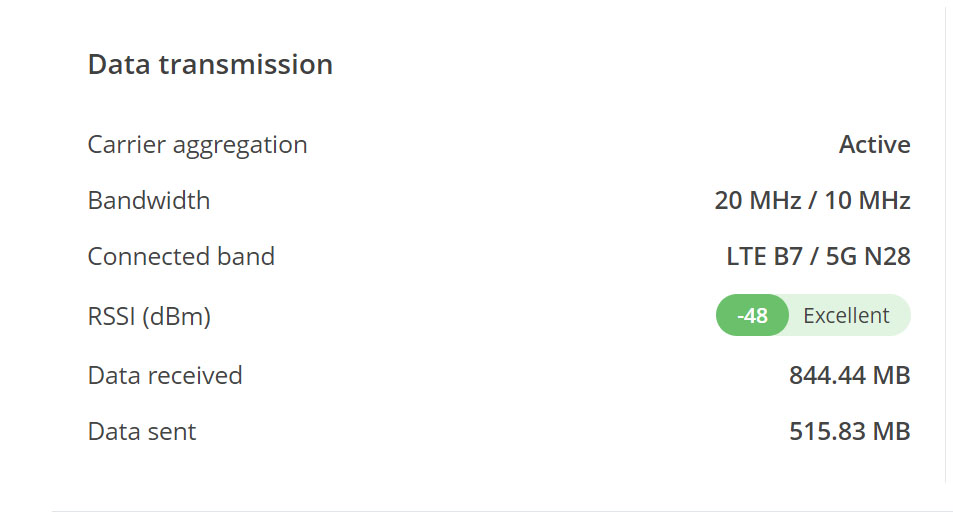

We’ll leave in the morning, but first we enjoy a wonderful saffron and wild mushroom risotto and salad dinner that we made together! Yum!

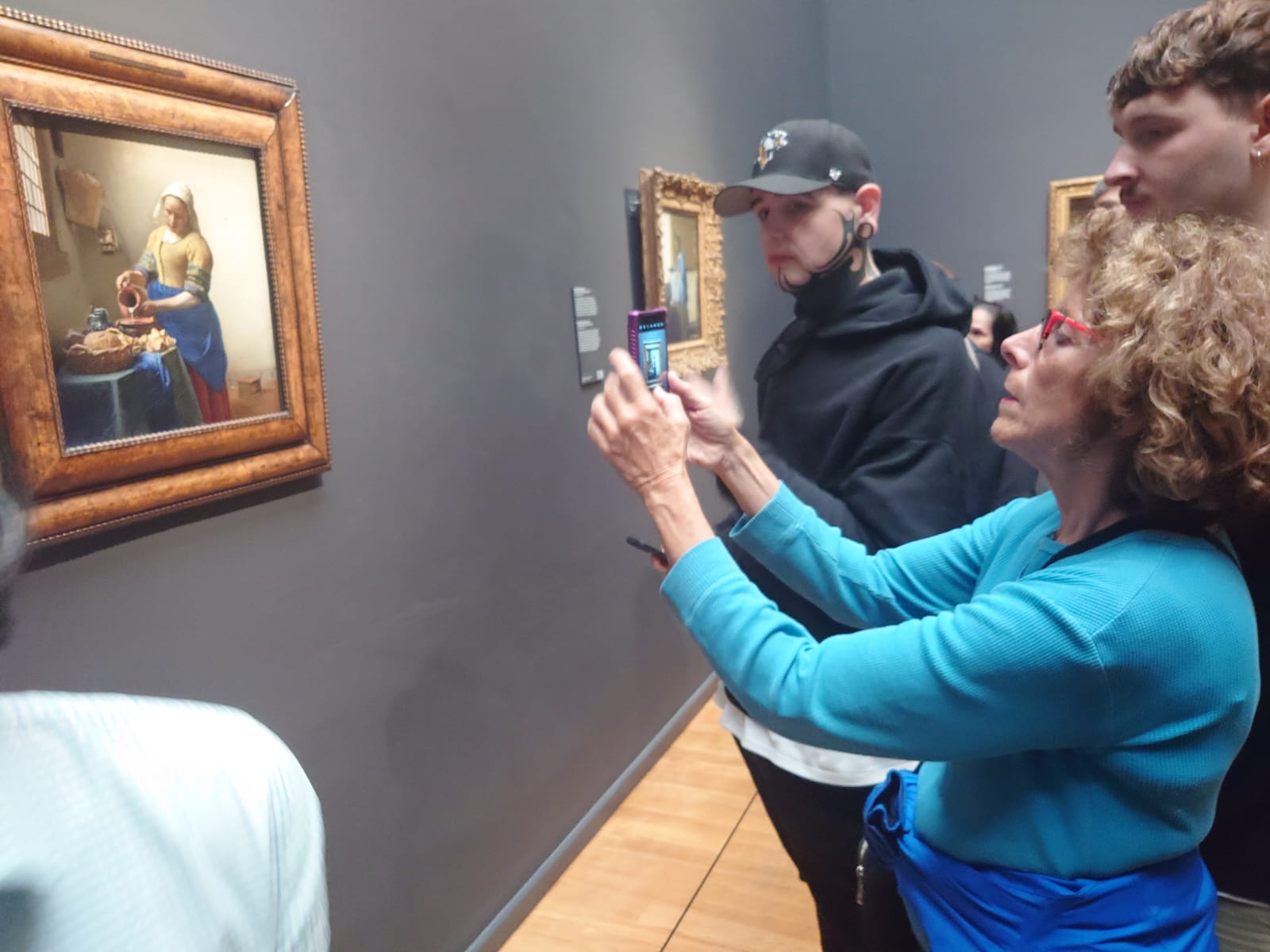
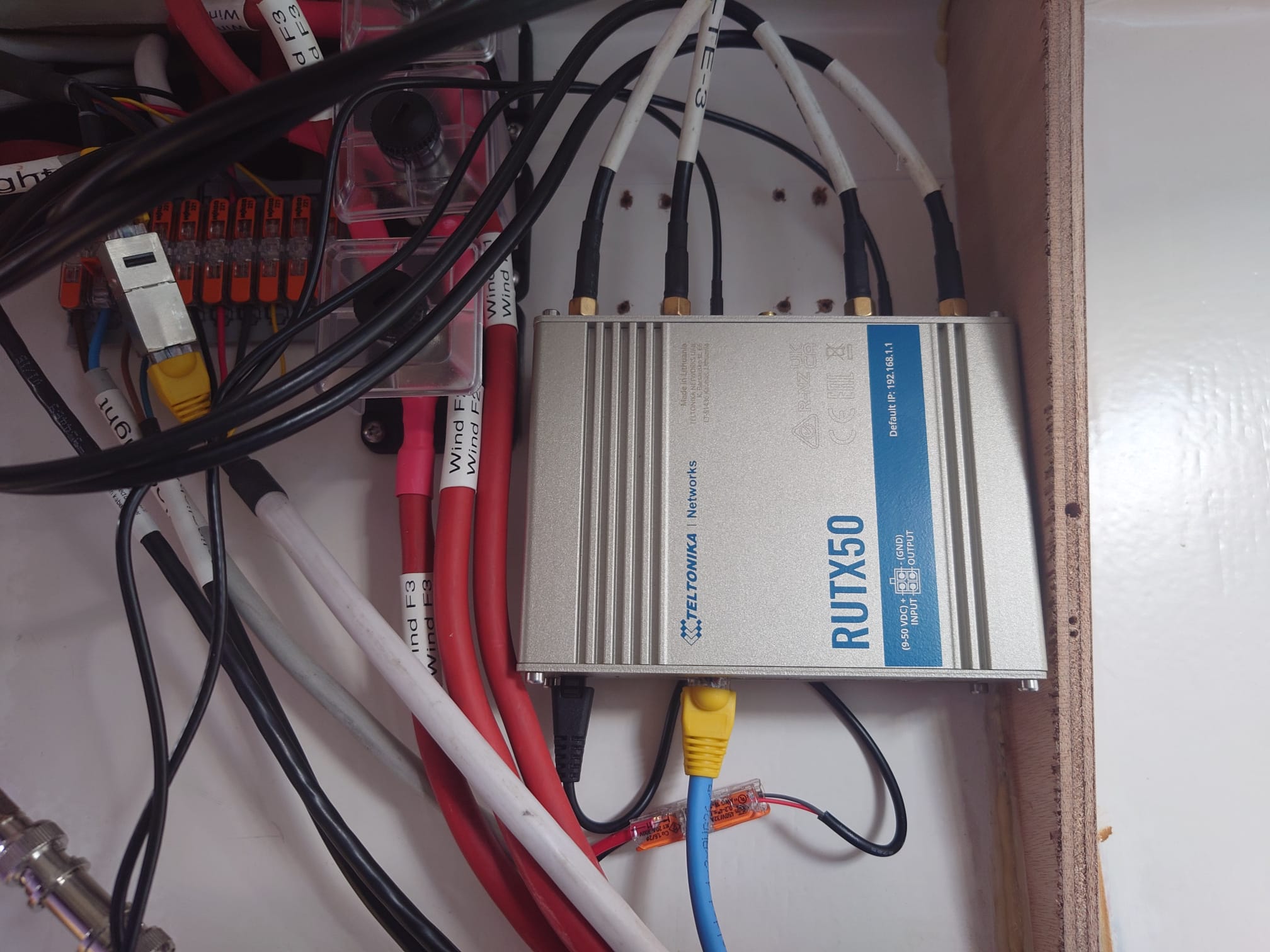
Leave a Reply